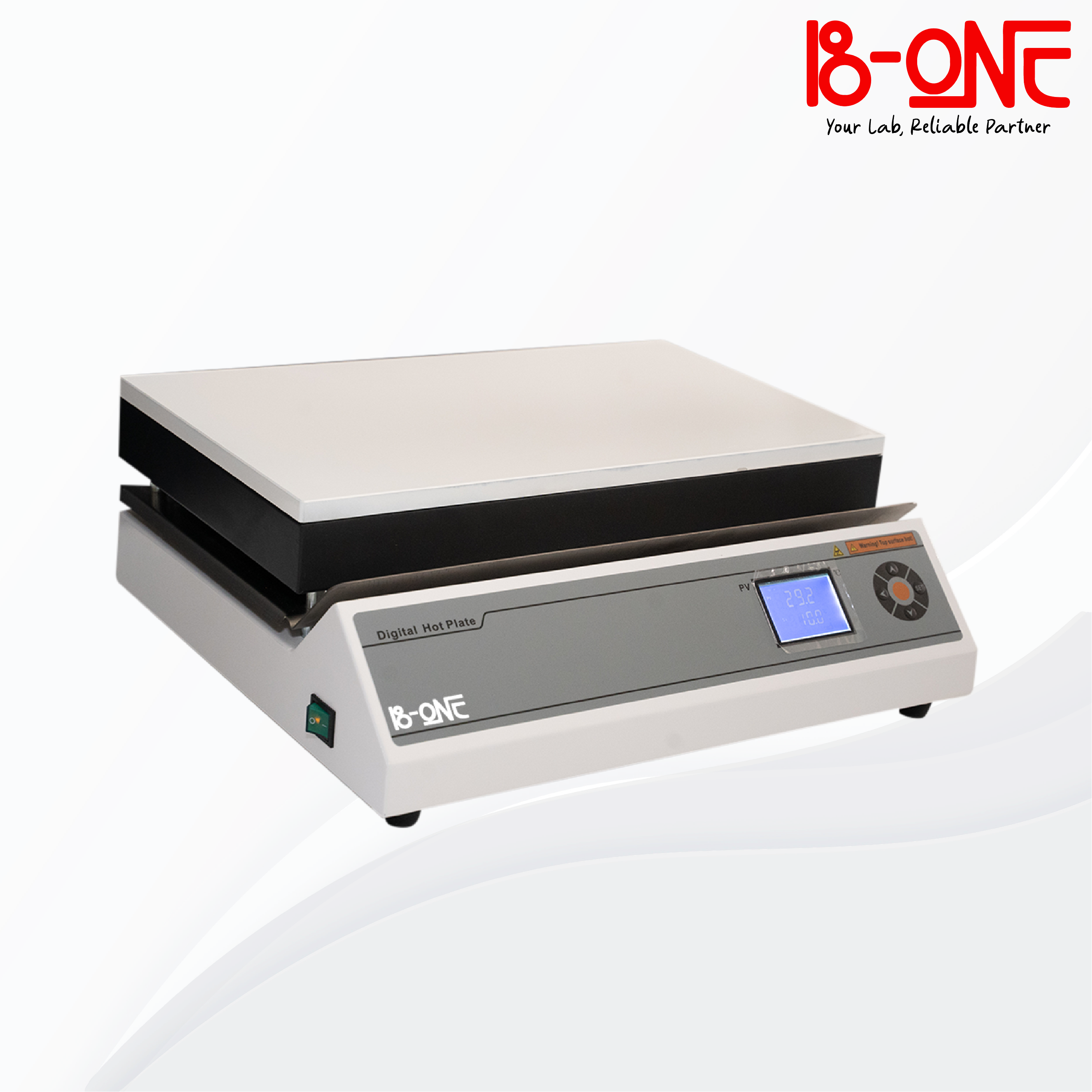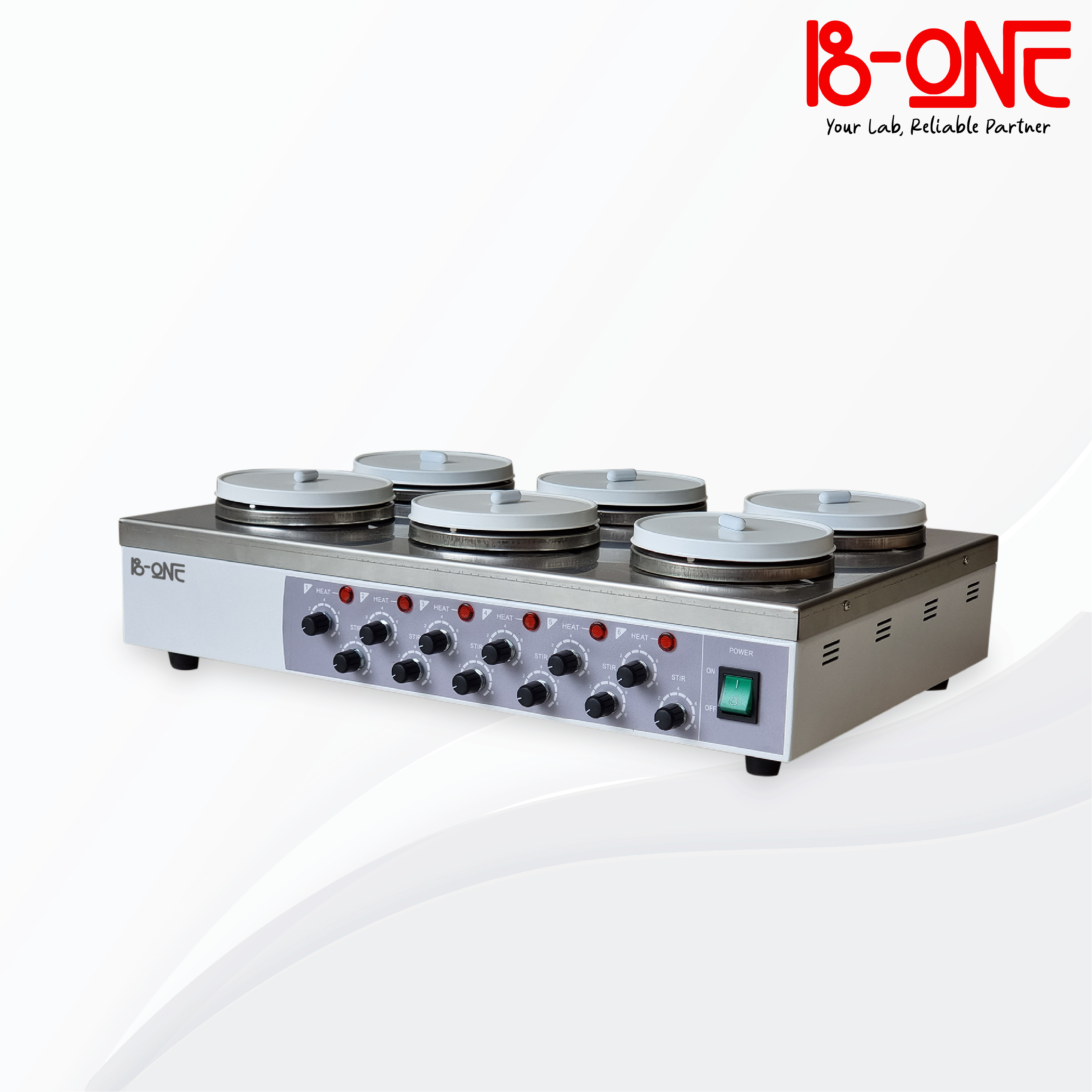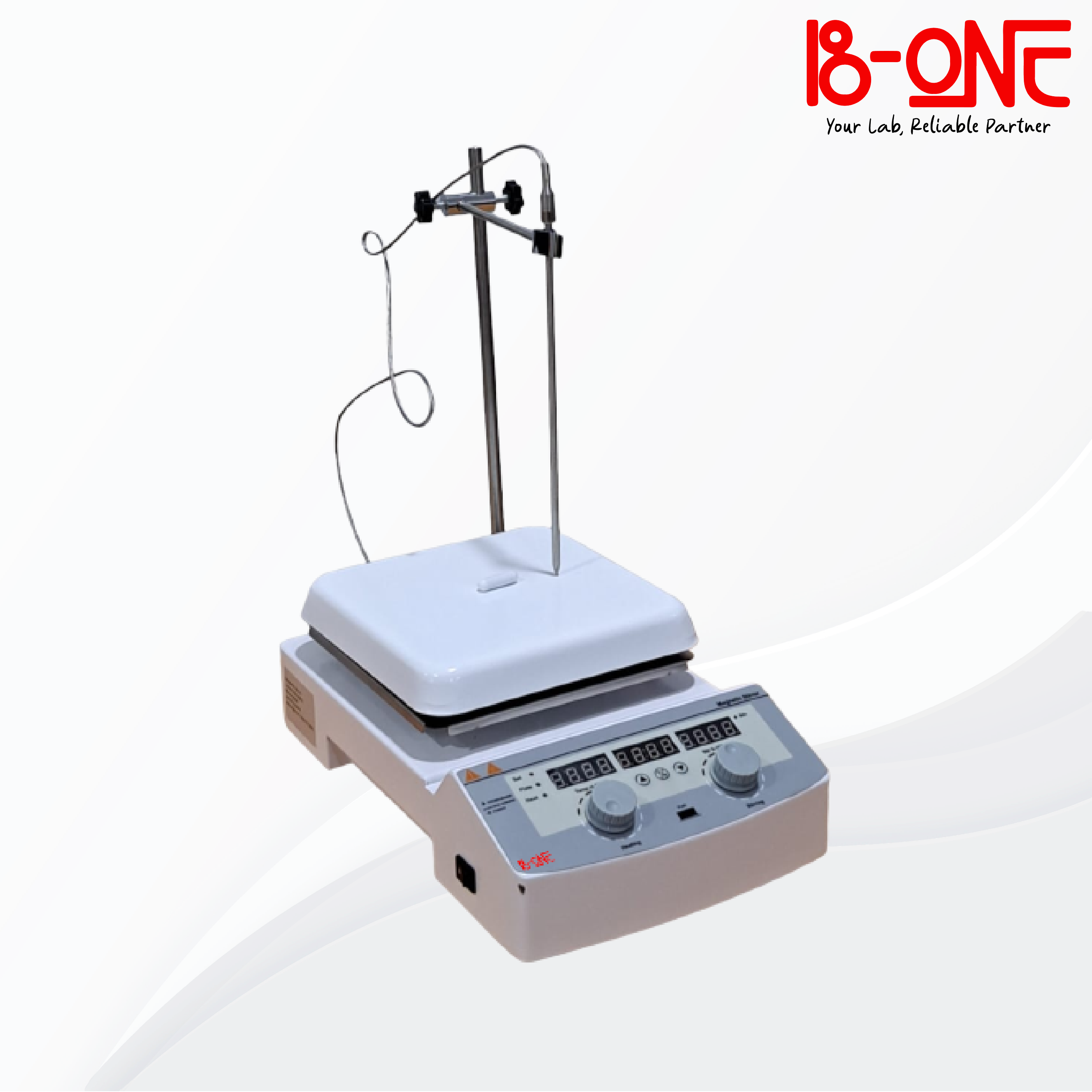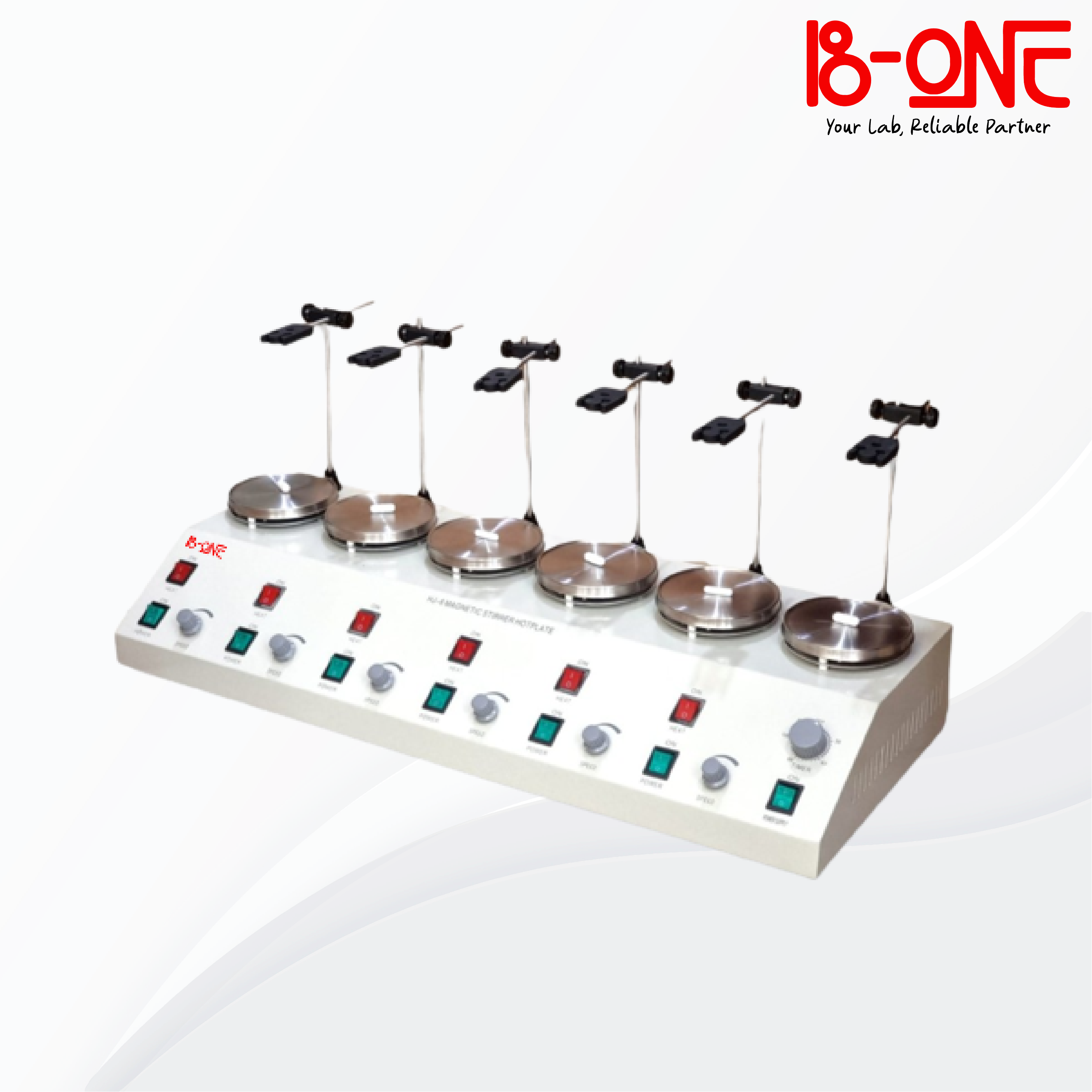B-ONE Digital Ceramic Hotplate
Hotplate is a laboratory equipment used to heat samples in containers such as beakers, flasks, or test tubes. It consists of a flat heating surface that heats up when powered, providing a controlled source of heat. Many laboratory hotplates come with built-in temperature controls, allowing precise temperature settings. They may also feature a stirring function, enabling the mixing of solutions using a magnetic stir bar while heating.
Ceramic hotplates are a popular choice in labs due to several advantages over other materials like aluminum or stainless steel:
- High Temperature Tolerance: Ceramic hotplates can withstand higher temperatures than metal hotplates, often reaching temperatures up to 450–500°C. This makes them ideal for reactions or heating applications requiring intense heat.
- Even Heat Distribution: Ceramic surfaces provide more uniform heat distribution than some metals, which helps in preventing “hot spots” that could cause uneven heating in a solution.
- Chemical Resistance: Ceramic is highly resistant to corrosion and chemical reactions with common lab chemicals. It is less likely to be damaged by spills of acidic or basic solutions, making it more durable in a laboratory setting.
- Non-reactive Surface: Unlike some metals, ceramic is non-reactive, so it won’t interact with substances being heated, ensuring that the samples remain uncontaminated.
- Easy to Clean: Ceramic surfaces are generally smooth and non-porous, making them easy to clean, even if substances spill and solidify on them.
- Safety: Ceramic hotplates cool down more slowly than some metal hotplates, which can be advantageous when needing to maintain a consistent temperature even after the hotplate is turned off.
Contact B-ONE:
Whatsapp: +62 812-9777-2400
Email: sales@priolab.id




